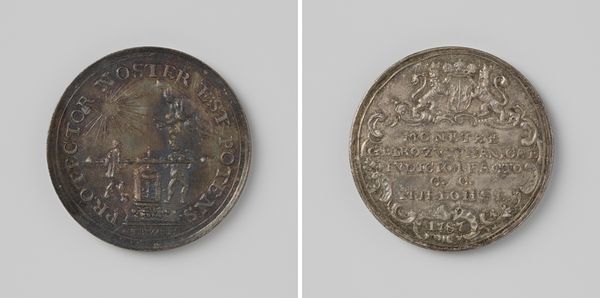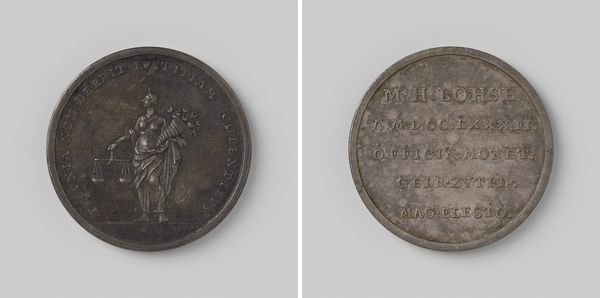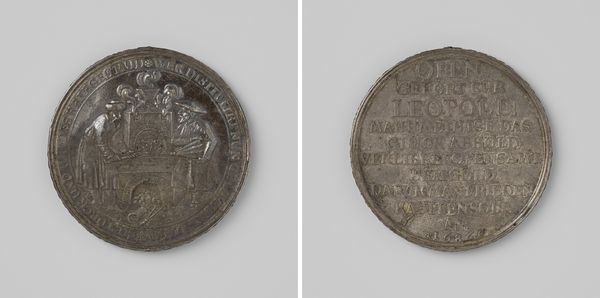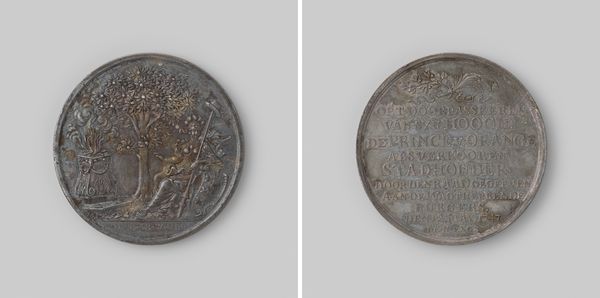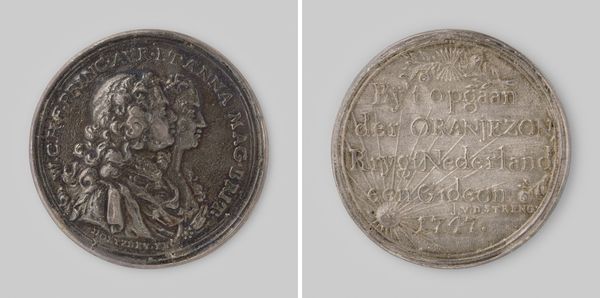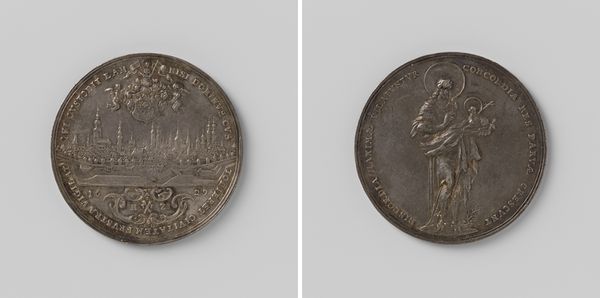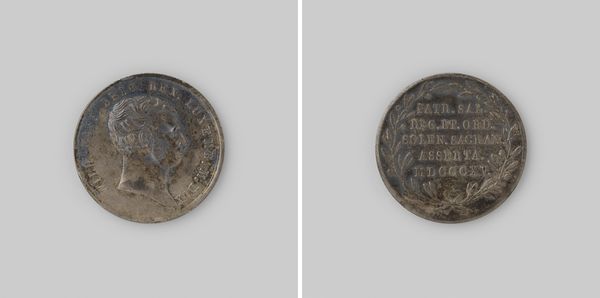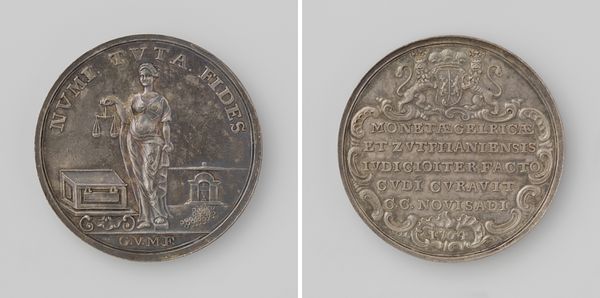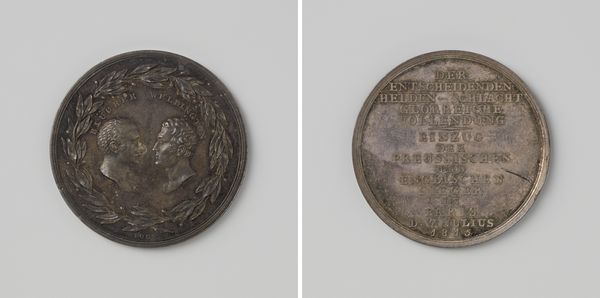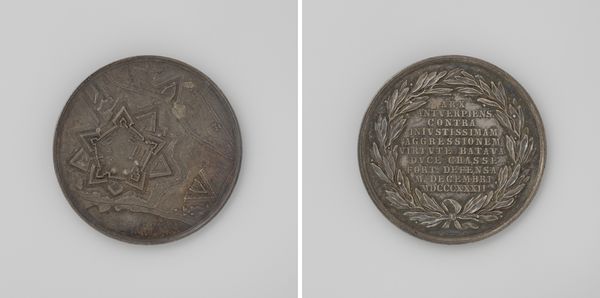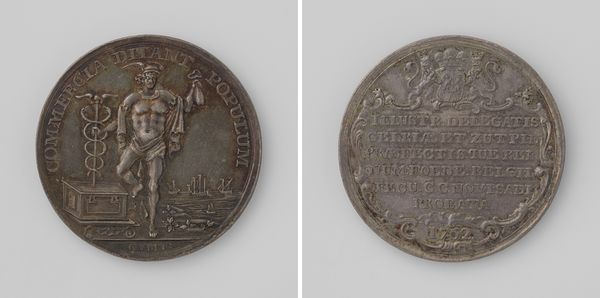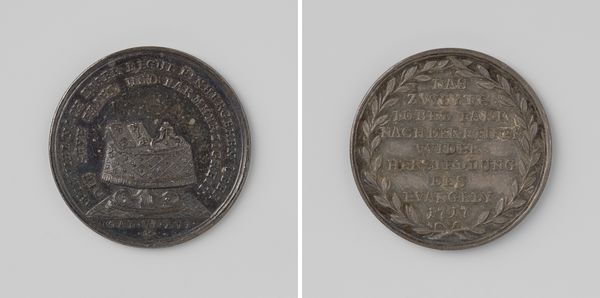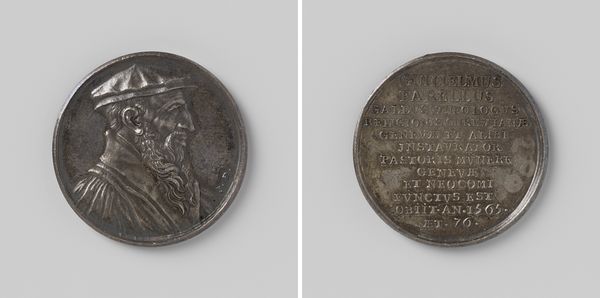
print, metal, relief, sculpture, engraving
#
portrait
#
neoclacissism
# print
#
metal
#
sculpture
#
relief
#
sculpture
#
ceramic
#
coin
#
engraving
Dimensions: diameter 3.8 cm, weight 30.31 gr
Copyright: Rijks Museum: Open Domain
Curator: Looking at this image, my immediate impression is one of austere elegance; a metallic surface catches the light in a way that speaks of both history and permanence. Editor: Indeed. We're looking at "Nazien van de munt van Harderwijk", a print on metal created in 1796 by Marten Hendrik Lohse, an example of neoclassical portraiture manifested on what is essentially a coin. It presents a fascinating confluence of art and politics. Curator: Absolutely, and that's what piques my interest. These sorts of engravings, beyond their monetary function, often played roles in social commentary and cultural projection. This wasn't just money; it was a statement. What kind of narratives were they trying to weave? What political threads can we pull from this coin's story? Editor: It's crucial to remember that the mint itself was an institution of considerable socio-political influence. Analyzing imagery on coins such as this becomes an exercise in reading power structures. The iconography –the seated figure on one side, possibly representing a deity of commerce, and the text and heraldry on the reverse– each symbol would have been carefully chosen. What story were these visual choices telling to the contemporary public? Curator: And I find myself drawn to thinking about how that original narrative intersects with later readings. The value, then and now, isn't simply economic. How can this humble metal disc become a tool of decolonizing narratives, decentering art historical canons, and opening up discourse? What does the "Dutch Golden Age" mean in a global context today? Editor: Context, absolutely. That era of perceived national glory rested on foundations of trade, but also colonialism. It is also worthwhile analyzing these numismatic prints in the broader public realm, how people engaged with these, how they understood the symbolic messages conveyed, and the coin's effect on notions of citizenship. Curator: So ultimately, beyond aesthetics or historical value, it becomes an artifact teeming with loaded significations. Editor: Precisely; an intimate portrait of history's complexities.
Comments
No comments
Be the first to comment and join the conversation on the ultimate creative platform.
